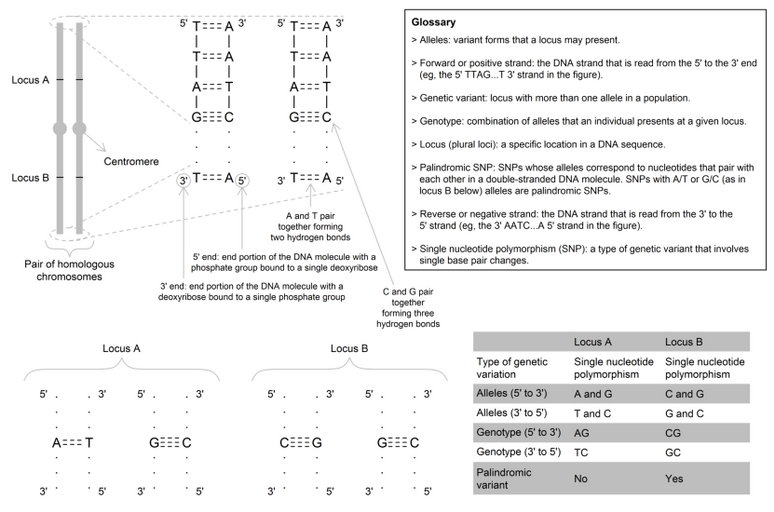The genotype of an individual refers to the allele inherited at a specific locus – if the alleles are the same, the genotype is homozygous and, if different, heterozygous.
Humans are diploid (i.e., one pair of chromosomes, one from each parent, are inherited) and most genetic variants are biallelic, meaning that there are two values (forms) that are possible at a particular locus. Therefore, study participants can be categorised into one of three genotype groups at a particular locus. They could be homozygous for the "reference" allele (i.e., homozygotes), heterozygous (i.e., having one of each of the "reference" and "non-reference" alleles, heterozygotes) or homozygous for the "non-reference" allele. Therefore, biallelic genotypes are usually coded as 0, 1 and 2 for analyses. A genotype is usually denoted with two letters representing the two nucleotide bases on the forward deoxyribonucleic acid (DNA) strand at that locus (i.e., for the rs234 single nucleotide polymorphisms (SNP) that has two common alleles A and G, AA, AG or GG would denote three possible genotype combinations, representing a homozygote for the A allele, a heterozygote and a homozygote for the G allele, respectively). Genotypes are often encoded in "additive" or "dosage" format, with respect to the reference allele. Assuming that G is the reference allele for rs234, the genotypes would be coded as follows: AA = 0 (i.e., zero copies of the G allele), AG = 1 (i.e., one copy of the G allele) and GG = 2 (i.e., two copies of the G allele). See Allele.

References
Other terms in 'Useful genetic terms ':
- Allele
- Chromosome
- Cis- and trans-variants
- Copy number variation
- Deoxyribonucleic acid (DNA)
- Gene
- Genetic variant
- Haplotype
- Heterozygous or Heterozygote
- Homozygous or Homozygote
- Linkage disequilibrium (LD)
- Locus
- Palindromic single nucleotide polymorphism (SNP)
- Polygenic risk score (PRS)
- Polymorphism
- Rare variants
- Single nucleotide polymorphism (SNP)

